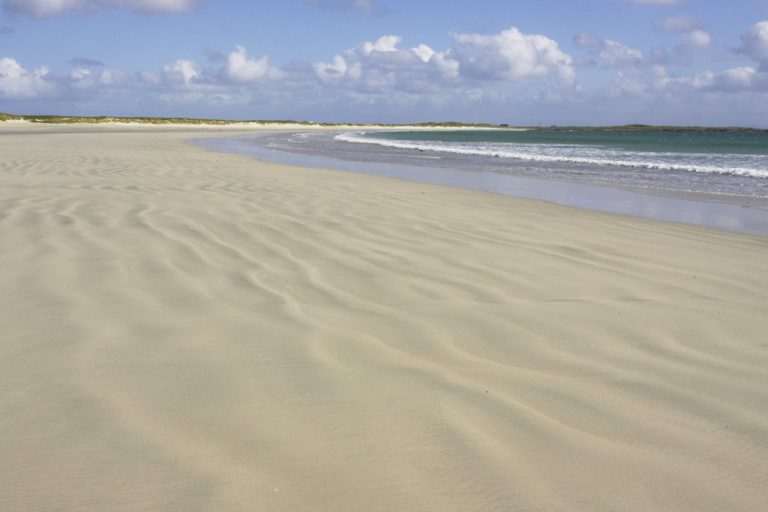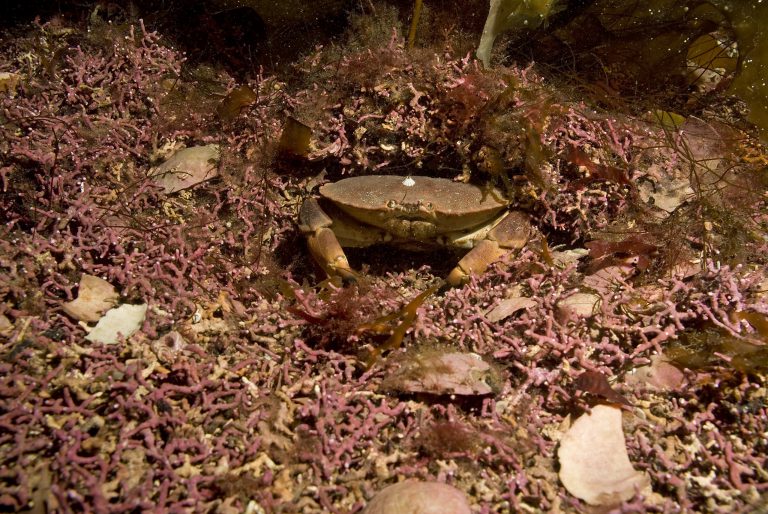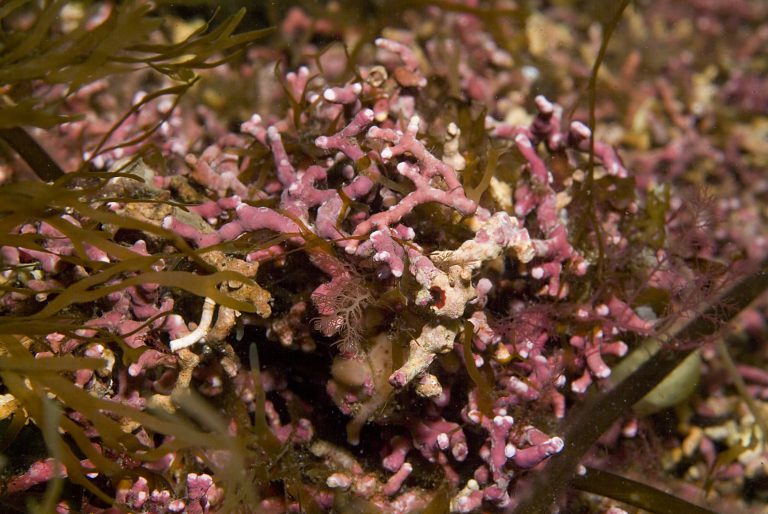A seaweed that looks like coral
Maerl is a red coralline algae which builds a hard skeleton from the calcium carbonate (chalk) in seawater. Individual plants interlock to form beds.
Maerl is extremely slow growing, with a growth rate of just 1mm per year, therefore beds of live and dead unattached maerl accumulate over thousands of years.
The west coast of Scotland’s famous white beaches are made up of fragments of maerl and shells, crushed by the waves. Fragments of washed up maerl look like small pieces of coral. A third of all the maerl in north-west Europe is found in the west of Scotland.

Image: Phillip Price
Scotland’s two common species of maerl are Phymatolithon calcareum, which is widespread, and Lithothamnion glaciale – is more northern in its range.

Image: SNH
Nooks and crannies between pieces of maerl are important to Scotland’s seas, as they shelter the juveniles of many other species, including sea urchins, sea cucumbers, anemones and worms.
Maerl beds are also a nursery for commercial species of fish and shellfish such as scallops. As it also sequesters carbon, maerl is an important blue carbon resource.
Maerl is a protected feature in the Loch Sween Marine Protected Area, within the Hope Spot.
Current Research
Carbon sequestering, provide nursery grounds for commercial species of fish and shellfish.
History
Historically there are records of Celtic people using maerl as an organic soil conditioner and liming agent. Extraction increased dramatically in the second half of the 20th century as motorised vessels were used to dredge it up. In 2005 this practice was banned to protect the UKs maerl beds.
Threats
As maerl is extremely fragile and slow growing, it can be damaged by bottom trawling, scallop dredging and erosion from anchors and mooring chains.
Maerl relies on light for photosynthesis, so sedimentation can smother and kill it. The thousands of tonnes of sediment released by large fish farms are particularly harmful, at considerable distances from the farms.
Climate change is also a major threat to maerl, as rising sea temperatures and ocean acidification are expected to cause significant stress and degradation to the maerl beds in Scotland.
Maerl beds
Phymatolithon calcareum & Lithothamnion glaciale
Image: SNH
Priority Marine Feature in Scotland’s seas, a UK BAP habitat and an OSPAR threatened and declining habitat
Length: Several km2
Age: up to 8000


